Jupiter - The oldest planet in the Solar System
Introduction
Jupiter it is the largest planet in the Solar System, it has almost two and a half times the matter of all the other planets together and its volume is a thousand times more than Earth.
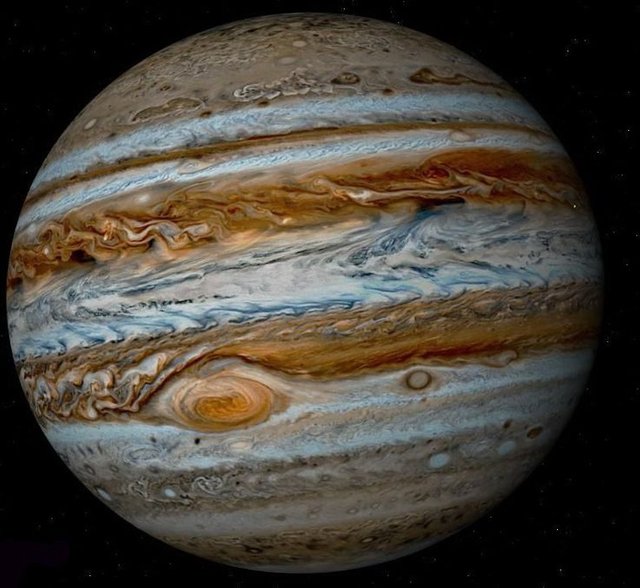
It receives its name from the Roman god Jupiter (Zeus in Greek mythology).
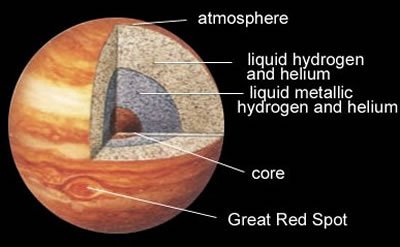
It is the planet that offers a greater brightness throughout the year according to its phase. It is also, after the Sun, the largest celestial body in the solar system, with a mass almost two and a half times greater than that of the other planets (with a mass 318 times greater than that of the Earth and, in addition to being so, in terms of volume, 1317 times larger than Earth). It is also the oldest planet in the solar system, being even older than the sun; This discovery was made by researchers at the University of Münster in Germany.
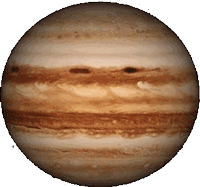
The atmospheric details include the Great Red Spot (a huge anticyclone located in the tropical latitudes of the southern hemisphere), the structure of clouds in dark bands and bright areas, and the global atmospheric dynamics determined by strong alternate zonal winds in latitude and at speeds up to 140 m / s (504 km / h).

The mass of Jupiter is such that its barycenter with the Sun is actually located on its surface (1,068 solar radii, from the center of the Sun). Despite being much larger than Earth (with a diameter eleven times greater), it is considerably less dense. The volume of Jupiter is equivalent to that of 1317 lands, but its mass is only 318 times greater. Jupiter's mass unit (Mj) is used to measure masses of other gaseous planets, especially extrasolar planets and brown dwarfs. While Jupiter would need to have 80 times its mass to trigger the necessary hydrogen fusion reactions and become a star, the smallest known red dwarf has only 30% more radius than Jupiter (although it has much more mass). Jupiter radiates more heat than it receives from the scarce sunlight that reaches that distance. The unchained heat difference is generated by Kelvin-Helmholtz instability due to adiabatic contraction (contraction). The consequence of this process is the contraction of the planet about two centimeters per year. After its formation, Jupiter was much hotter and had a diameter almost twice that of today.

Satellites of Jupiter
So far (June 2017), 69 natural Jupiter satellites have been discovered. In 1610, Galileo discovered the four majors. They received the names of the mythological lovers of Jupiter (or Zeus in the Greek pantheon): Io, Europa, Ganymede and Callisto. This tradition has been followed to name the other satellites or moons. More recent observations have shown that the average densities of the largest moons follow the apparent tendency of the solar system itself.
Io and Europa, near Jupiter, are dense and rocky like the inner planets.
Ganimedes and Callisto, which are more distant, are composed mainly of water ice and have lower densities. During the formation of satellites and planets, its proximity to the central body (the Sun or Jupiter) clearly prevents the most volatile substances from condensing.
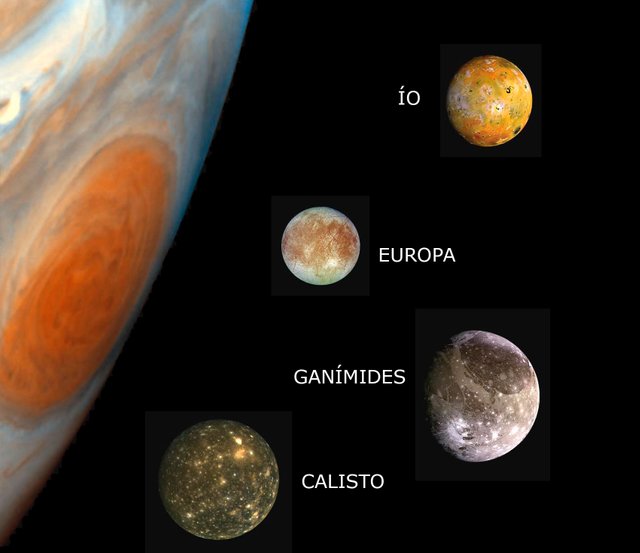
Callisto is almost as big as Mercury, and Ganymede is bigger. If they described their orbits around the sun. The icy chambers of these two bodies are marked by numerous craters, the marks of an ancient bombardment, probably from the nucleus of a comet, similar to the bombardment of asteroids that left signals on the Earth's Moon. On the contrary, the surface of Europe is very smooth. It is covered by a layer of ice that can come out of the bombardment of the primordial meteorite. An intricate red of shallow ridges covers the surface of the ice. A team of astronomers at John Hopkins University (USA) recently discovered that Ganymede has a very faint oxygen atmosphere, with a pressure comparable to that of the Earth's atmosphere at a height of about 400 meters. Prior to this discovery, the time of oxygen change in Europe was also adjusted. The most remarkable satellite, without a doubt, Io. Its surface presents great contrasts: from yellowish to dark brown and white areas with black spots. Io is shaken by a volcanism driven by the dispersion of energy from inside the satellite. Ten volcanoes exploded during Voyager's space flight in 1979 and, since then, other eruptions have been detected. The orifices emit sulfur dioxide (SO2) and it condenses on the surface forming a local and transient atmosphere. The white regions are solid SO2; the other brands are produced, presumably, by other sulfur compounds. The rest was much smaller and less studied than the four satellites discovered by Galileo. The eight external satellites are in two groups of four and can
The rings of Jupiter
Already close to the planet, the Voyager 1 spacecraft discovered in 1979 a very weak ring system that is invisible from Earth. The material of these rings must be in continuous renewal because it is observed moving towards the planet. Unlike Saturn's rings, which had a complex and intricate pattern, Jupiter has a single simple ring system composed of an internal halo, a main ring and a Gossamer ring. For the Voyager spacecraft, Gossamer's ring looked like a single ring, but the images captured by Galileo show us an unexpected discovery, in reality they are two rings. One is locked inside the other. The rings are very weak and are composed of dust particles thrown into space when interplanetary meteorites collide with the four inner moons of Jupiter: Metis, Adrastea, Thebe and Amalthea. Many of the particles have a microscopic size. The inner halo has a toroidal shape and extends radially from approximately 92,000 kilometers to 122,500 kilometers from the center of Jupiter. It is formed by dust particles from the inner edge of the main ring that "bloomed" outward as they fell towards the planet. The main and brightest ring extends from the edge of the halo to 128,940 kilometers just inside the orbit of Adrastea. Near the Metis orbit, the brightness of the main ring decreases. The two faint Gossamer rings have a fairly uniform nature. The deepest ring of Amalthea Gossamer extends from the orbit of Adrastea to the orbit of Amalthea at 181,000 kilometers from the center of Jupiter. The weakest ring of Tebe Gossamer extends from the orbit of Amalthea to the orbit of Thebe at 221,000 kilometers. The rings and moons of Jupiter move within a belt of intense radiation composed of electrons and ions trapped by the planet's magnetic field. These particles and fields comprise the Jovian magnetosphere or magnetic environment, which extends from 3 to 7 million kilometers towards the Sun, and narrows in the form of a cuff until reaching the orbit of Saturn (at a distance of 750 million kilometers).
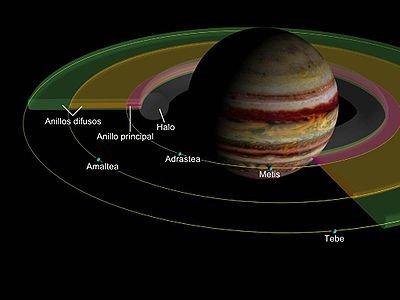
https://es.wikipedia.org/wiki/J%C3%BApiter_(planeta)
Great post mate, keep up the good work :)